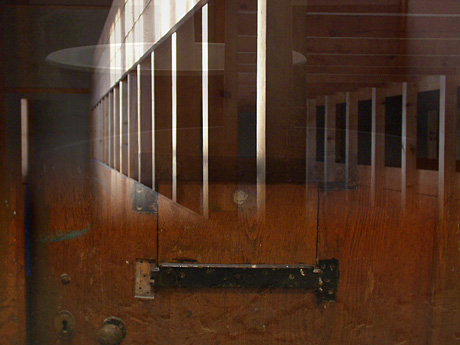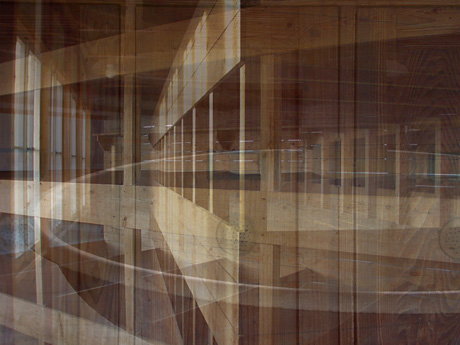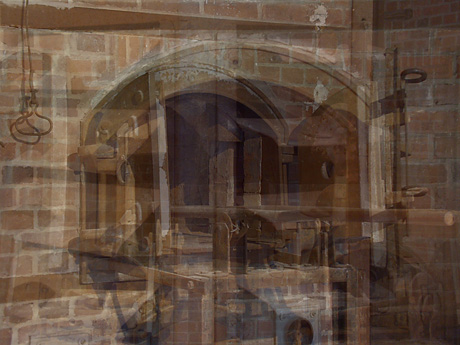 |
Three Sequences
The work is made up from three main sequences of images, each representing one of the primordial places of existence and death in the Dachau concentration camp. These are the barracks, where the prisoners, who were generally subjected to slave labour, lived; the bunker, where prisoners were held and tortured by the SS; the crematoria, where the bodies of those either murdered, or dead from disease or exhaustion, were disposed of.
The constituant images are presented in the inventory.
The three sequences are arranged vertically on the screen, the barracks occupying the top third, the bunker the bottom third, and the crematoria in-between the two. As long as the observer does not intervene, the images of the three sequences continue to merge into each other in a never ending fade. The observer interacts with the work by moving the mouse about vigorously. This causes the work to speed up, and each of the three places take precedence on the screen, in relation to the mouse's movements.
This is presented in the score.
Geometry
The continual juxtaposition of the images reveals the underlying geometry of the diverse, manufactured artefacts that constitute the environment of the concentration camp. Before people were brought to Dachau to die, engineers and artisans, tradespeople and sub-contractors came there to assemble it all together, ordinary objects, beds, doors, latrines; and less ordinary ones, iron bars, ovens...
Today these artefacts of horror have reappropriated the present, the unbearable emptiness of place resonates with the presence of all those whose absence is everywhere marked.
This ever-changing geometry within the picture is the entry point into the work, because the random association of objects creates moments of visual harmony that is contrary to the meaning of Dachau. Geometry is a concept fabricated within the mind, located at the confluence between science and art. As such, it can only be human and civilisational, yet here its aesthetic is associated with the most unspeakable barbary that art and science, as acts of human engagement, should have opposed, but failed to do so. The disquietude created by the contradiction between the reality of Dachau and the contemplative, even mesmerizing, character of the images serves to prompt a reflection on the treacherous nature of aesthetics itself: socially and culturally, aesthetics is perceived of as a carrier of positive values, yet in verity it is situated exterior to any moral system The association between "beauty" and "goodness" is opportunistic and often contentious.
The Heartbeat
The memory of those who are no longer here is symbolised by the heartbeat that rhythms the work. Thus the at present "peaceful", empty spaces of Dachau are "given back" to those who sojourned there.
One may speculate on whether the constant beating of the heart, intruding within the perimeter of human consciousness at times of serenity or of great stress or distress, educated our minds through the long path of evolution in the appreciation and understanding of harmony in music and geometry.
The heartbeat changes, speeds up and becomes louder, becomes breathless, transforms into thunder, as the observer interacts with the work, to finally cease beating when one quits the crematorium...
"Dachau: the Prototype" cannot be viewed over the internet: if this work interests you, kindly contact joetopia, in order to receive a CD-ROM. |
 |
 |
|









